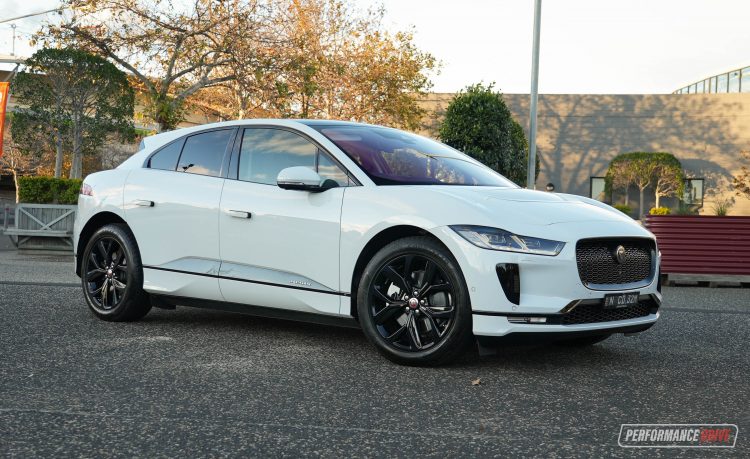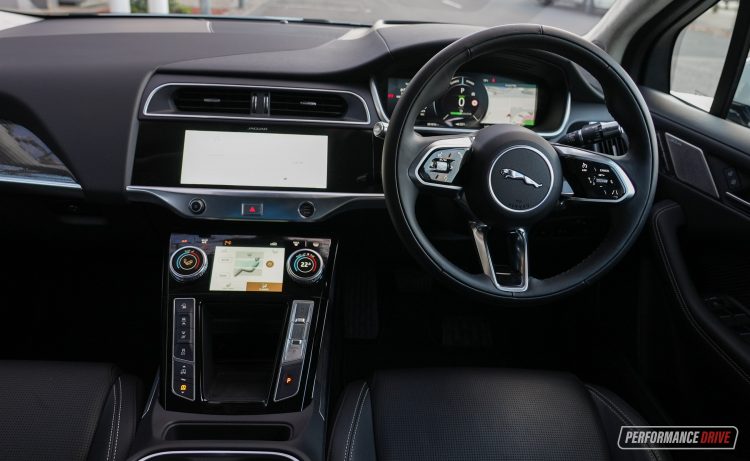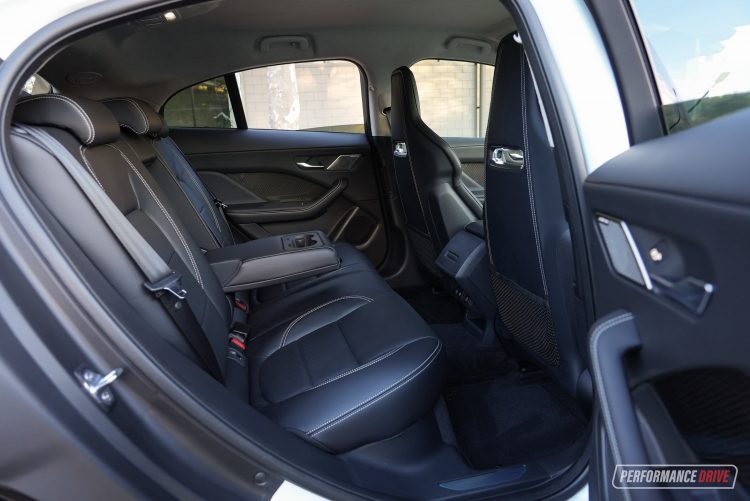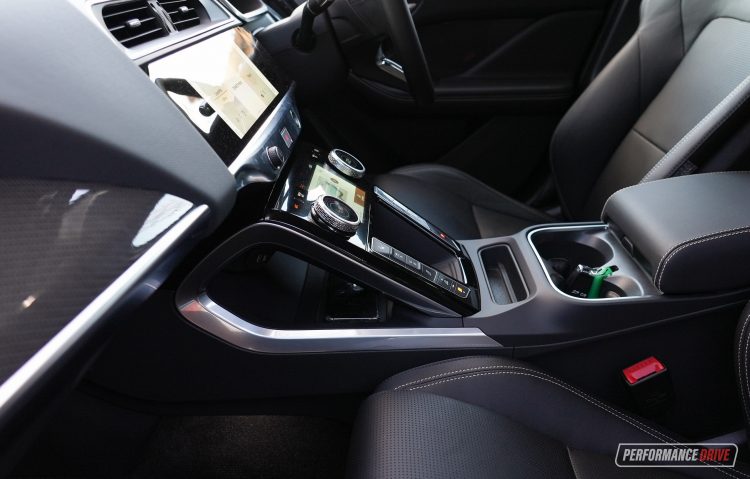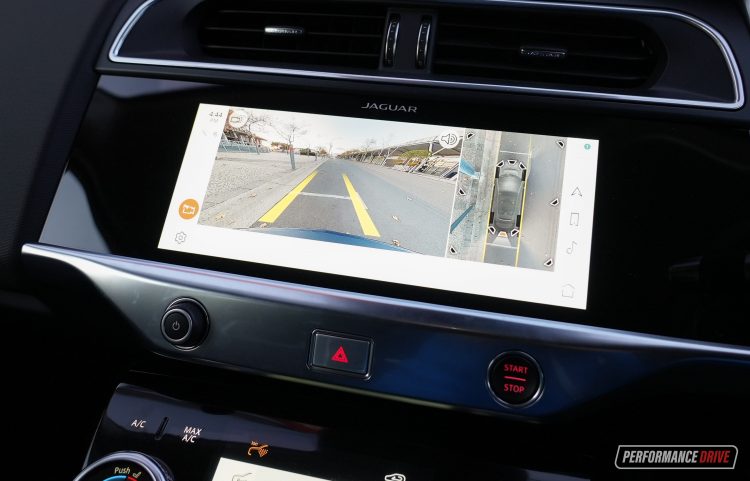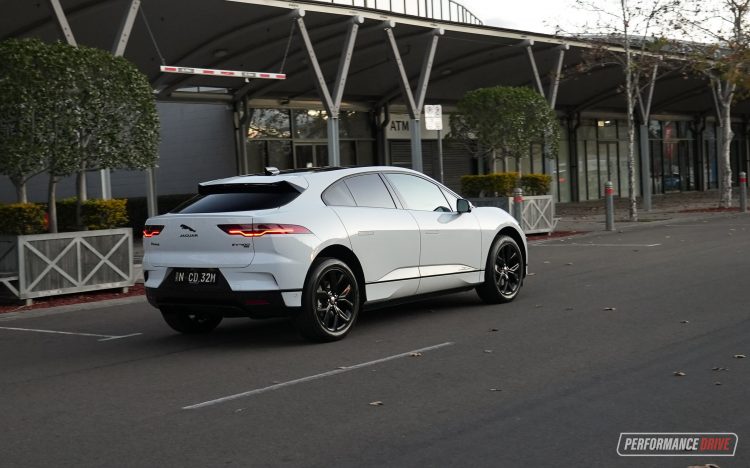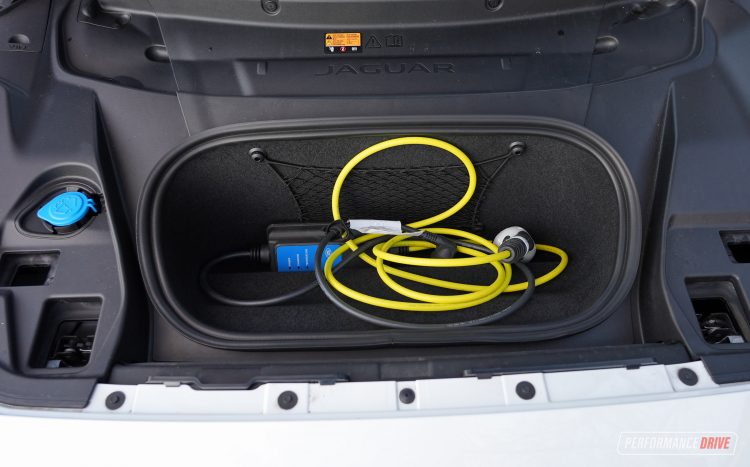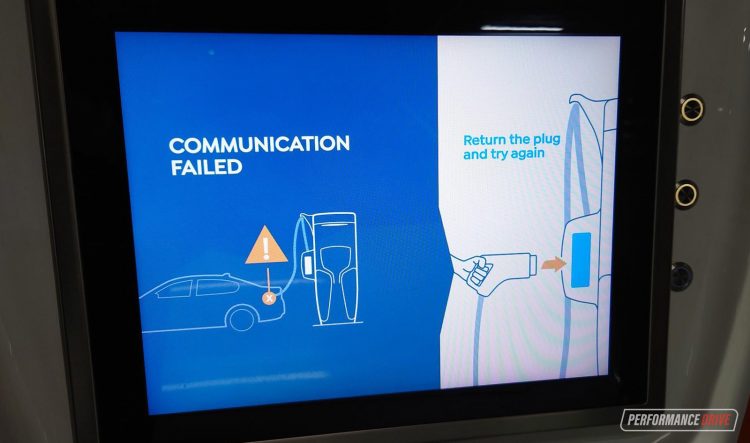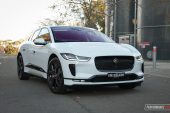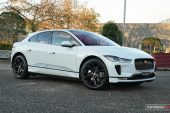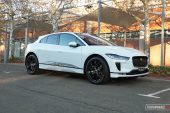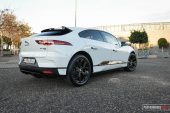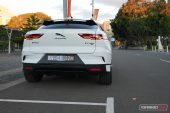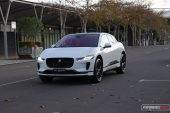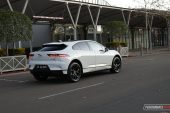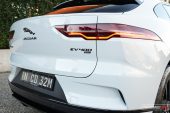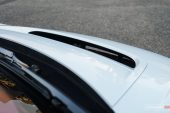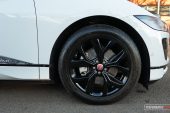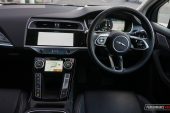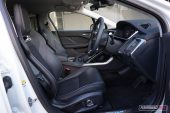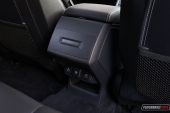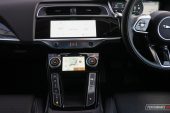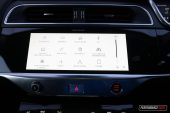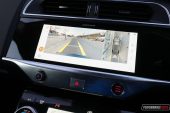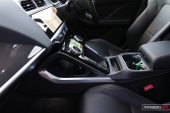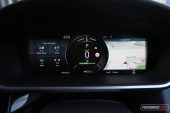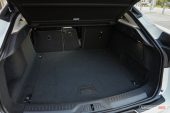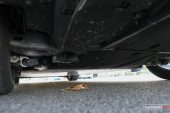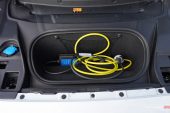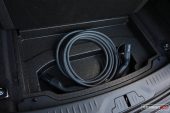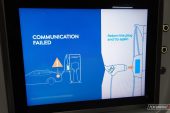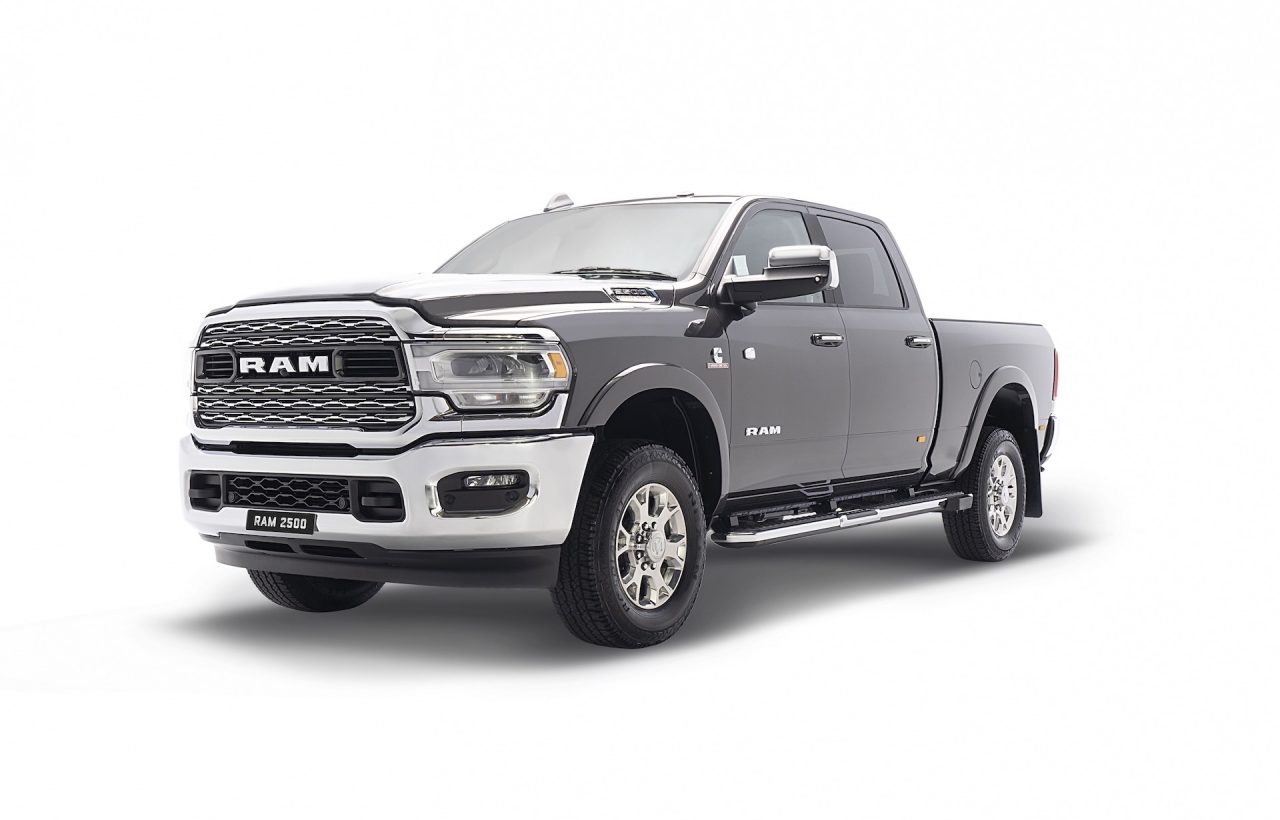It’s been nearly a year since we first got our hands on the Tesla-challenging, all-electric, performance-luxury SUV from Jaguar. The Austrian-built I-PACE has been updated for 2021, welcoming a new infotainment system, three-phase AC home charging capability, and more driver-focussed technology.
Sales in Australia started out slow since its release in 2019. 70 units were sold in 2020, and only 38 units sold so far between January and through August, 2021. There is no doubt one of its biggest battles is the lack of infrastructure and support for electric vehicles in Australia, but that is rapidly changing. More and more public charging stations are being set up, with big plans seemingly announced every month.
Hedging its bets that infrastructure and demand will improve, Jaguar still offers a generous range of variants and options. From the bottom, you can get the S, SE, and HSE. Here we’re testing the base S model, which starts the price off from $128,248 (excluding on-road costs).
No matter which spec you opt for, the same power source is offered. You get an incredible 294kW (400PS, hence the EV400 badge) of instant power, and 696Nm of explosive torque. These very exciting outputs come from a 90kWh battery that powers two electric motors – one for the front axle and one for the rear.
2021 Jaguar I-PACE EV400 S – THE SPECS
[column width=”47%” padding=”6%”]Power source: 90kWh lithium-ion battery, 2 electric motors
Output: 294kW / 696Nm
Transmission: Single-speed auto
Drive type: All-wheel drive
Wheels: F & R: 19×8.5, 255/55 (optional 20s fitted)
ANCAP: Five stars
Tare weight: 2133kg
Power-to-weight: 7.25:1 (kg:kW)
Recharge: DC 100kW, AC 11kW[/column] [column width=”47%” padding=”0″]Range: 470km (WLTP)/377km (EPA)
0-60km/h: 2.58 seconds*
0-100km/h: 4.73 seconds*
0-200km/h: 21.56 seconds*
60-110km/h: 2.92 seconds*
1/4 mile: 13.25 seconds at 169.6km/h*
Max acceleration: 0.886g
100-0km/h braking: 2.83 seconds at 36.31 metres*
Max deceleration: -1.227g
Priced from: $128,248[/column][end_columns]
*Figures based on 2020 SE model tested by PerformanceDrive. Factory claims may be different
2021 Jaguar I-PACE EV400 S – THE PACKAGE
Jaguar has not altered the I-PACE’s external design because it still looks fantastic – it is the very design that won World Car Design of the Year in 2019. That smooth and aggressive front end still takes the lead in conveying elegance and performance like every modern Jag. Flair and sophistication are sprinkled in different ways through to the rear, with contrasting black elements, brand projecting puddle lights, and flush door handles that sink into the body when locked or driving.
At the rear, those wide Jaguar-esque taillights and flatter rear window slope make it look like its XE and XF siblings. Even though it is an all-wheel drive, the overall shape exposes more of a hot hatch than an upright, top-heavy SUV.
On the inside, the cabin takes what was already the freshest design in the segment to the next level. Yet, the layout is clean and easy to navigate. You certainly get a sense of luxury with brushed metal areas, lots of leather, and high-resolution displays all around you. Even down to the air conditioning controls. Two knobs have their own display screens, and pushing and pulling the knob gives you different settings to change. Very cool.
Another great aspect of the cabin is the absolute practicality and space that you get, which is not dissimilar to a big SUV. The front seat heights are slightly raised, so it feels as roomy and as easy to get in and out of as an SUV. There are lots of cup holders and storage spaces, including hidden ones under the ‘floating’ centre console.
Rear passengers are not forgotten in the I-PACE either. They can be presented with the full luxury treatment, with quality extended leather, comfy seats, USB ports, cup holders, and air vents. The only qualm is the centre seat passenger must negotiate with a drivetrain tunnel protrusion at their feet, and we’re not sure why as the tunnel isn’t required in an EV.
An added benefit of doing away with a conventional engine is the room it leaves for two boots. At the front, the I-PACE’s bonnet opens to a small 27-litre cavity, but it doesn’t open and close as smoothly as the rear boot. Otherwise, the real boot offers a surprising 656 litres of storage. Not bad for an EV that requires lots of room for batteries. You can also increase its size to 1453L by folding the rear seats down with a split of 40:20:40. Though, the opening space to the cabin is narrow and restrictive.
In the way of equipment, it is a feast of a list. Some of the most important technologies include forward and rearward collision mitigation, lane keeping aid and departure warning, a superb 11-speaker sound system with subwoofer, wireless hotspot, 19-inch alloys, dual-zone climate control with remote start, selectable driving modes, distance-controlled cruise control, a 360-degree camera, side exit door warning, and road sign recognition, to name a few.
However, for a vehicle at this end of town, there are some features Jaguar likes to dig its hands deeper into your pocket for. For example, you need to pay extra for heated and ventilated front seats, matrix LED headlights with active shadowing high-beam, wireless phone charging, a more premium Meridian sound system, rear climate control, heated steering wheel, premium cabin lighting, a premium leather upgrade, suede cloth headlining, head-up display, and gesture control for the powered tailgate. Some of these omissions are shameful for a car at this price. This test vehicle had some of these extras, and it bumps the price up by more than $32k.
The second-biggest change for the 2021 I-PACE update is the new Pivi Pro infotainment system with Android Auto and Apple CarPlay. It brings together a huge 12.3-inch high-definition digital instrument cluster, and 10-inch and 5-inch upper and lower touch-screens, and those multi-function, haptic rotary controllers with smaller screens mentioned earlier.
The menus and self-learning navigation are uncomplicated, intuitive, and crisp. For example, when navigation is used, it learns when to stay quiet when you are near your home. It can also find the nearest charging stations and allow you to add more in the future. The graphics are also really nice, and the screens are beautifully integrated into the in-car design.
The I-PACE comes with a five-year, 200,000km warranty. Most premium manufacturers offer unlimited kilometre warranties, although most are still at three years. This also comes with a hugely generous five years of free servicing and road-side assistance.
2021 Jaguar I-PACE EV400 S – THE DRIVE
Our all-important ‘how it drives’ section is even more important being a fully electric performance vehicle. Like with all EVs, the delivery of power feels very different. It is a more instantaneous surge with no lag. And when there is this much access to power and torque, it almost feels limitless. When full throttle is demanded, your head pushes back into the seats with monstrous g-force. It really feels incredible. And it feels so much more effortless than a conventional engine as there is no screaming or gear kicks to wait for.
With 294kW and 696Nm of torque at the tips of your toes, a 0-100km/h sprint can be achieved in only 4.8 seconds. Our previous test, in an SE variant last year, managed it in 4.73 seconds. In comparison, the new Mercedes-Benz EQC400 achieves 5.1 seconds, the BMW iX3 clocks 6.8 seconds, and the Audi e-tron 55 does 6.6 seconds (all official claims). But it doesn’t reach the dizzy heights of the more expensive Tesla Model X’s 4.6 seconds (or 2.8 seconds in the Performance variant).
The other significant change for the 2021 I-PACE update is how it charges. It now supports faster three-phase home charging for those who have access to it, with an 11kW on-board charger as standard. This enables 53km of range (WLTP) to be added per hour. A full charge from empty now takes only 8.6 hours at this rate. But it can still charge on single-phase using 7kW wall boxes. If this is you, up to 35km of charge is possible per hour, with a full charge taking 12.75 hours. When charging out in the field, a 50kW charger will add about 63km in 15 minutes, and those rare 100kW chargers will add about 127km over the same period.
A full charge enables roughly 470km (WLTP) of driving from its 90kWh battery. But it significantly depends on your type of journey. If you’re travelling on lots of higher speed freeways, expect the range to drop. Only when zipping around suburbia can you expect to achieve 470km – which is opposite to cars with combustion engines. In our testing, its bliss point for maximising the range seems to be when travelling between 50km/h and 80km/h.
The biggest setback for the I-PACE (and all EVs) is the lack of charging stations, especially ultra-rapid charging stations. In Australia that is. On top of that, according to the Australian Institute of Health and Welfare, in 2016, 32 per cent of Australians rented. This means that one third of Australians do not have the freedom to install charging infrastructure in their dwelling. Add to that, there is currently no substantial government legislation that requires newly-built residential apartments to have any charging stations, nor to have a mechanism in strata plans to manage installation or usage. Until the EV infrastructure improves, only a small percentage of drivers with specific lifestyles and proximities could experience the full advantage of owning an EV like the I-PACE.
During our time with this one, we used a mix of public charging stations, including an ultra-rapid 350kW charging station in Zetland, Sydney. It took 1 hour and 45 minutes to charge to full capacity from 18 per cent, or 74kWh of charge. It costed 40 cents per kWh, translating to $29.60 in total. We also used a few NRMA fast chargers around NSW. On three occasions we experienced charging errors from different charging stations. Luckily for us, for each station that experienced errors, there were other stations available that did work. This is not very assuring if you’re travelling to more remote areas of town (or out of town) where there are fewer options available.
Being an EV, naturally, the Jaguar I-PACE is calming and deluxe to drive. The optional air suspension our test vehicle had adds a $2002 premium, but it provides a luxurious ride that’s also adjustable to improve overall adaptability. The dignified British charm means it holds up well on harsh roads, soaking up bumpy roads with ease.
Cornering is an engaging and entertaining experience. It certainly handles like any other modern Jag. There is a virtuous amount of feedback through the steering, despite weighing 2133kg – you wouldn’t suspect it weighs that much. The weight also helps it feel very planted and solid at higher speeds, allowing you to enjoy your drive with utter confidence.
Ultimately, it is a vehicle that lures you in for those spirited ‘just for fun’ drives. Even with 696Nm of torque on tap, it exhibits relentless grip. It’s fundamentally impossible to provoke wheelspin, even in the wet and on slippery country roads. This is a remarkable grand tourer in that sense.
2020 Jaguar I-PACE EV400 SE – THE VIDEO
2021 Jaguar I-PACE EV400 S – THE VERDICT
There is no doubt the Jaguar I-PACE makes a solid mark for being luxurious, performance-oriented, and environmentally friendly. It is one of few vehicles that shows that all these attributes are possible in one vehicle. The I-PACE also proves you can have a ghastly amount of power to play with, yet the interior does not have to be compromised in space or practicality.
But there is one thing wrong, and it’s not the fault of the I-PACE. It’s the slow EV infrastructure development and lack of Australian government policies to encourage the mass adoption of this innovation. Until that changes, only drivers with specific lifestyles and proximities to this developing infrastructure can appreciate the full advantage of owning an I-PACE.
[column width=”47%” padding=”6%”]PROS:
– Award-winning design
– Outstanding performance will knock your socks off
– Liveable driving range of 470km per charge
– New three-phase capability enables faster charging
– Stunning on-board tech and features
[/column] [column width=”47%” padding=”0″]CONS:
– High price compared with some equivalent rivals
– Paying more for options that should be standard by now
– Australia’s slow EV infrastructure growth to consider[/column][end_columns]
As always, if you’re thinking about buying a new car don’t forget to click here to speak with our car buying specialists.
